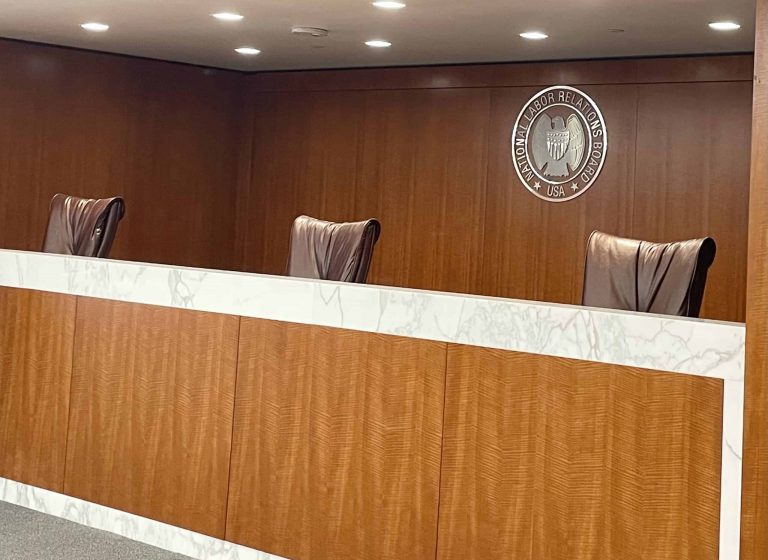
Tascha Shahriari-Parsa is a student at Harvard Law School.
Last week, in West Virginia v. EPA, the Court concluded that the Environmental Protection Agency (EPA) exceeded its authority under the Clean Air Act when it sought to regulate carbon dioxide emissions through a cap-and-trade system.
West Virginia already has the damaging effect of severely limiting the EPA’s ability to “respond to the most pressing environmental challenge of our time.” But by crystalizing the “major questions doctrine” — which, as the Court construes it, is effectively a canon of deregulation — the case has implications reaching far beyond the EPA, including for labor agencies like the NLRB and DOL. It warns of a further aggrandizement of the Court’s power to frustrate efforts to modernize labor law.
The Clean Air Act and the CPP
First, a bit on the statute at issue in West Virginia. The EPA gets its authority from three different parts of the Clean Air Act. Two of these prescribe standards for certain specified pollutants, not including carbon dioxide. The third, Section 111’s New Source Performance Standards program, asks the EPA to regulate other causes of air pollution that “may be reasonably anticipated to endanger public health or welfare” — including sources that Congress may have not yet properly known about at the time of the Act’s passage. Under this section, the EPA must limit a pollutant’s emissions through what it determines is “the best system of emission reduction” after considering the costs and benefits of alternative systems.
In issuing its CPP rule, the EPA determined that “generation shifting” — where states would shift much of their energy production from fossil fuels to cleaner energy sources through, among other means, a market-based cap-and-trade system — was the best system for appropriately limiting carbon dioxide emissions.
The “Major Question Doctrine”
The Court ruled that the CPP was an impermissible construction of the Clean Air Act, not because it deviated from the Act’s text, but because the EPA’s interpretation of the Act fell under the “major questions doctrine.” This means that where an agency action is economically or politically significant, and the agency action goes beyond the “history and breadth of the authority that the agency has asserted,” courts should presume that Congress would not have delegated such authority to the agency without express congressional authorization. “[A] merely plausible textual basis for the agency action” is insufficient, and deference to the agency’s interpretation is unwarranted.
In justifying that this case presented a “major question,” the majority cited the new rule’s deviation from the EPA’s own “established practice,” the fact that Congress had “considered and rejected” cap-and-trade systems since the enactment of the Clean Air Act, and the fact that the EPA’s interpretation would “empower[] it to substantially restructure the American energy market.” Thus, the majority inferred that what Congress meant by “the best system of emission reduction” in Section 111 was merely the employment of emission-reducing technology at the site-level, not generation shifting, even if the latter could be “described as a ‘system’” “[a]s a matter of definitional possibilities.”
The Canon of Deregulation
In reaching its conclusion, the West Virginia majority wrote it “cannot ignore” that Congress “has consistently rejected proposals to amend the Clean Air Act” to regulate greenhouse gas emissions in a manner similar to the EPA’s CPP rule. But as the dissent points out, Congress also “failed to enact bills barring EPA from implementing the [CPP].” By suggesting that Congress’s failure to enact one kind of legislation (regulatory) has more bearing on the meaning of the Act than its failure to enact another kind of legislation (deregulatory), the majority concocts a canon of deregulation.
Insofar as the Court’s holding relies on the EPA’s settled practice of regulating through technological controls rather than generation shifting systems, it also converges to the same deregulatory outcome. In theory, any time an agency promulgates a new rule that doesn’t merely revert back to an old one, the agency action could be characterized as a deviation from “established practice.”
The Court claims that it is being faithful to legislative intent. Yet, Congress always has the power to overrule an agency’s, or the court’s, interpretation of a statute. The real task, therefore, is not to strike the appropriate balance of power between agencies and Congress, but rather, between agencies and the courts. It is a question of whose statutory interpretation should be the default: the agency’s regulation or the court’s deregulation? By retrenching judicial deference to agency decisions, the Court hatches a “canon of regulatory avoidance” — and that could be bad news for labor.
How West Virginia Could Make It Harder to Revitalize Labor Law
Most NLRB decisions and many DOL regulations cover the entire economy, and thus could plausibly be construed as “major.” Regulations like Executive Order 14026, which increased the minimum wage for federal contractors, could be challenged for “empower[ing] [the Department of Labor] to substantially restructure the American [labor] market . . . .” on the basis that federal contractors cover a large percentage of the country’s workforce. If the Board expands the scope of civil remedies available under the NLRA, the Court might cite Congress’s failure to pass civil remedies through legislation, along with the Board’s “established practice” of excluding such remedies, as reasons to override the Board’s interpretation. And even if Congress enacts labor law reform that gives the Board clear power through “capacious terms” with the intent of “enlarg[ing] agency discretion” — the same kind of power that Congress gave the EPA through the Clean Air Act — what will restrain the Court from refusing to allow the Board to exercise that expressly delegated authority?
We can hope that the Court does not read for itself such an expansive deregulatory power, and that it and the lower courts will develop principles to reign in the major questions doctrine. Namely, even the most novel and “extraordinary” changes in administrative labor policy might not be as “transformative” as the EPA’s efforts to overhaul energy production, and might not amount to an exercise of “unprecedented power over American industry.” But we should also prepare for the worst that West Virginia presages.
Meanwhile, West Virginia will likely leave most anti-labor policy under a Republican administration intact. Even if such policies transform the labor regime by eviscerating traditional labor regulations, they won’t trigger the doubt that Congress “intended to delegate a decision of such economic and political significance” to the agency, insofar as they diminish agencies’ regulatory authority over industry. In other words, there is only a canon of nondelegation — there is no canon of compulsory delegation. However, Republican labor policy isn’t always deregulatory. If labor agencies issue rules that significantly expand their authority over unions (such as under the LMRDA or Section 8(b) of the NLRA) or over employers (such as by enhancing employees’ Section 7 rights to not engage in concerted activity), then perhaps the Court will be tested to place limits on its doctrine.
As Justice Kagan points out in her West Virginia dissent, Congress “knew that without regulatory flexibility, changing circumstances and scientific developments would soon render the Clean Air Act obsolete.” Indeed, as the majority notes, the EPA avoided such obsoletion by “adopt[ing] what it called a ‘broader, forward-thinking approach to the design’ of Section 111 regulations” — as if this were a bad thing. If there was any question as to where the Court might stand on a “forward-thinking approach” to labor law, there is likely the answer. Obsoletion is the goal.









Daily News & Commentary
Start your day with our roundup of the latest labor developments. See all
July 2
Block, Nanda, and Nayak argue that the NLRA is under attack, harming democracy; the EEOC files a motion to dismiss a lawsuit brought by former EEOC Commissioner Jocelyn Samuels; and SEIU Local 1000 strikes an agreement with the State of California to delay the state's return-to-office executive order for state workers.
July 1
In today’s news and commentary, the Department of Labor proposes to roll back minimum wage and overtime protections for home care workers, a federal judge dismissed a lawsuit by public defenders over a union’s Gaza statements, and Philadelphia’s largest municipal union is on strike for first time in nearly 40 years. On Monday, the U.S. […]
June 30
Antidiscrimination scholars question McDonnell Douglas, George Washington University Hospital bargained in bad faith, and NY regulators defend LPA dispensary law.
June 29
In today’s news and commentary, Trump v. CASA restricts nationwide injunctions, a preliminary injunction continues to stop DOL from shutting down Job Corps, and the minimum wage is set to rise in multiple cities and states. On Friday, the Supreme Court held in Trump v. CASA that universal injunctions “likely exceed the equitable authority that […]
June 27
Labor's role in Zohran Mamdani's victory; DHS funding amendment aims to expand guest worker programs; COSELL submission deadline rapidly approaching
June 26
A district judge issues a preliminary injunction blocking agencies from implementing Trump’s executive order eliminating collective bargaining for federal workers; workers organize for the reinstatement of two doctors who were put on administrative leave after union activity; and Lamont vetoes unemployment benefits for striking workers.